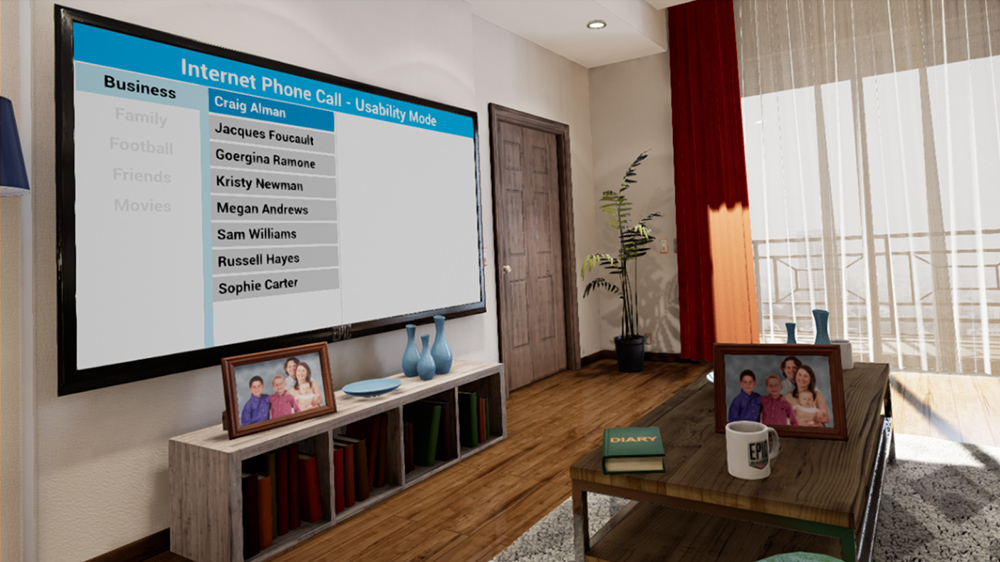
I ‘m sitting in a dark room. It’s a sunny day outside but all that’s coming from the balcony window is glare.
First published in our 14 June 2018 print edition.
Vision Australia has a new piece of kit, a virtual reality headset and software which allows people with good or acceptable vision to experience the difficulties faced by people who are vision impaired. The room I just described was an example of a typical apartment or living room, and struggling to see in the shadows is only the start of my troubles.
ADVERTISEMENT
Virtual reality headsets use body tracking and clever optics to trick people’s brains into thinking they’re somewhere else. Looking down to see I’m in an armchair is odd, because if I tried putting my arms on the chair they’d feel like they just fell straight through.
I look up to the window and suddenly can’t see.
“This is cataracts,” Vision Australia Gippsland regional manager of client services Beryl Raufer explains. She has control of the laptop which is powering the VR headset.
The glare from before is worse. Much worse. Looking toward the balcony knocks out almost all my vision.
ADVERTISEMENT
“It’s like looking through ground glass,” Beryl commented, before showing me what life is like with macular degeneration (“a big amoeba in the middle of your vision”), diabetic retinopathy (like looking through a cow’s spots), and glaucoma (that’s tunnel vision).
My prior impression of what living with cataracts would be like was completely wrong. The reality is different but no less bad. In fact, it’s worse – I hadn’t realised any strong light source could effectively blind you.
And this is why Vision Australia has invested thousands of dollars into this VR experience – I’m certainly not the only one who didn’t understand. Families, friends, and even many health professionals have no real idea of what living with vision impairment is like.
“I see this as being really valuable for us to be showing health professionals so they understand what their patients are coming to them with. But also families who think ‘oh, gran could see if she really tried,'” Beryl said.
She then taps a button and suddenly, the lights come on and the space is transformed. The walls are white and furniture stands out against them, door handles change to a bright colour on dark doors, tripping hazards have been moved, the rug replaced, and a sheer curtain hangs over the window.

Beryl turns the cataracts layer back on and the effect is nowhere near as bad as before – the curtain has diffused the light.
What many people and designers don’t understand is how simple decisions like having furniture which contrasts with the things around it can greatly improve the quality of life of people who struggle to see.
Vision Australia presently has one VR headset in the state, and in its time with it the Gippsland branch had a tremendous response from local healthcare providers finally able to experience what their patients are managing.
ADVERTISEMENT



